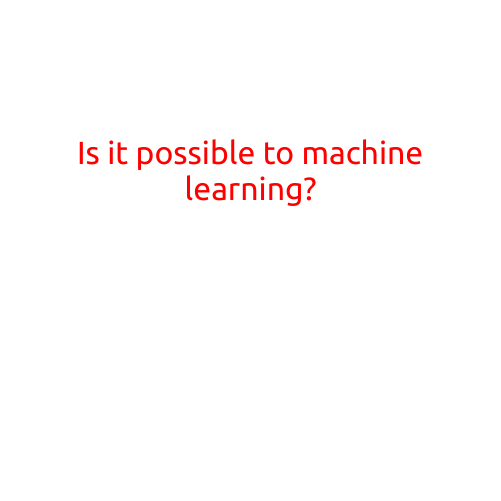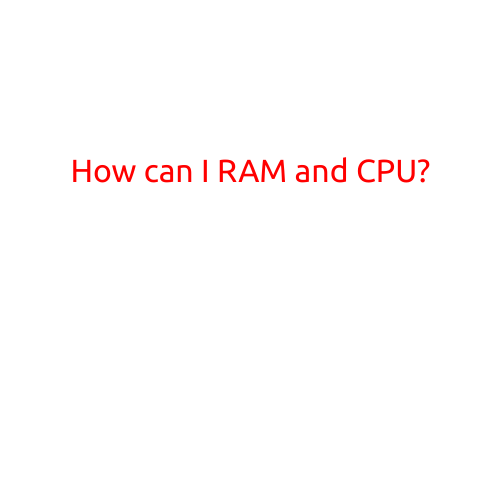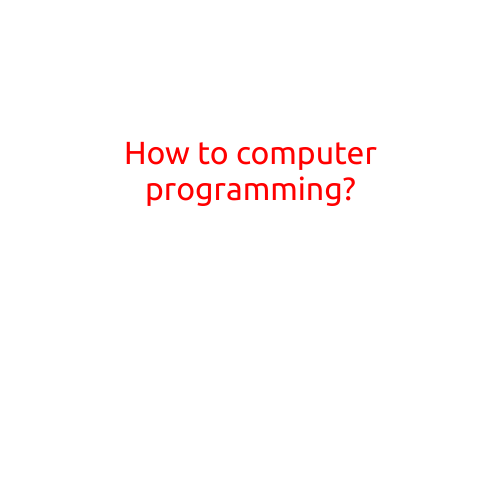
Is it Possible to Machine Learn?
As we navigate the rapidly evolving landscape of technology, one of the most tantalizing and thought-provoking questions is whether it is truly possible to achieve machine learning. Machine learning, simply put, is the ability of machines to learn, improve, and adapt without being explicitly programmed. But is this concept simply the realm of science fiction, or can it become a reality?
What is Machine Learning, Anyway?
Machine learning is a subfield of artificial intelligence that enables machines to automatically learn from data, make predictions, and improve their performance over time. This is achieved through complex algorithms and statistical models that can be trained on large datasets. The end goal is to create machines that can autonomously learn from their environment, adapting to new situations and scenarios without human intervention.
The Challenges
While machine learning has made tremendous progress in recent years, there are several significant challenges that must be overcome in order to achieve true machine learning:
- Data Quality: Machine learning requires large, high-quality datasets to train and test algorithms. However, gathering and cleaning such data can be a daunting task.
- Algorithmic Complexity: Machine learning algorithms are complex and often difficult to understand, making it challenging to develop and improve them.
- Interpretability: As machine learning models become more complex, it becomes increasingly difficult to understand how they arrive at their decisions.
- Explainability: There is a growing need to understand why machines make certain decisions, which can be a significant challenge for machine learning systems.
- Scalability: Machine learning systems must be capable of handling large datasets and processing massive amounts of data in real-time.
Current State of Machine Learning
Despite these challenges, machine learning has made significant strides in recent years. Today, we see machine learning being used in a wide range of applications, including:
- Image Recognition: Machines can now recognize images with remarkable accuracy, enabling applications such as facial recognition and self-driving cars.
- Natural Language Processing: Machines can understand and generate human language, enabling applications such as virtual assistants and chatbots.
- Recommendation Systems: Machines can analyze user behavior and data to provide personalized recommendations, enhancing the user experience.
The Future of Machine Learning
So, is it possible to achieve true machine learning? While we are not yet at the point of true machine learning, the advancements made in recent years suggest that we are heading in the right direction. In the near future, we can expect to see:
- Advances in Algorithmic Complexity: Researchers will continue to develop more efficient and effective algorithms to tackle complex machine learning challenges.
- Improved Data Quality: Efforts will focus on developing better data collection and cleaning methods to ensure high-quality datasets.
- Increased Interoperability: Machine learning systems will become more integrated, enabling seamless communication and decision-making between different systems.
- Advances in Explainability and Interpretability: Researchers will work to develop methods to explain and interpret machine learning decisions, ensuring transparency and accountability.
Conclusion
In conclusion, while there are challenges to overcome, the possibilities of machine learning are vast and exciting. As we continue to push the boundaries of what is possible, we are likely to see significant advancements in the years to come. Whether we can achieve true machine learning remains to be seen, but one thing is certain – the potential for machines to learn and adapt without human intervention is a tantalizing prospect that will continue to captivate and inspire us for years to come.





